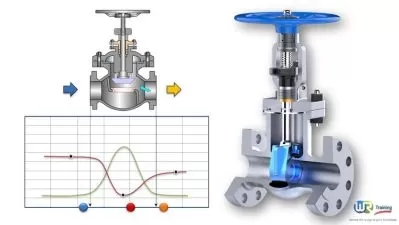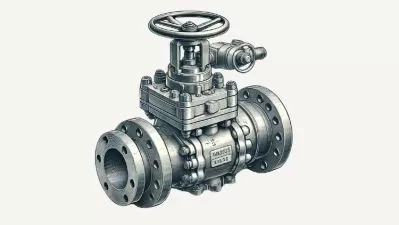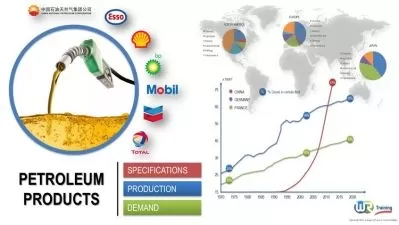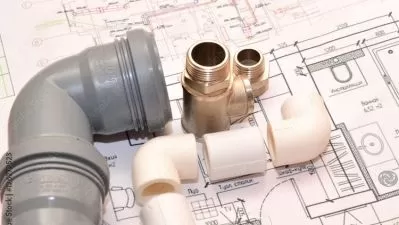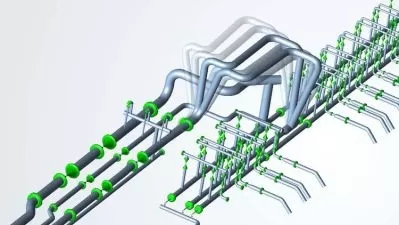Heat Exchangers : Piping Layouts
Atul Singla
48:45
Description
All about Exchanger Piping
What You'll Learn?
- Exchanger Classification
- Constructional and Operating features for all Type exchangers
- Layout Aspects & 3D Pictorial Views
- Interesting facts : Optimizing Layout
Who is this for?
What You Need to Know?
More details
DescriptionA heat exchanger is a system used to transfer heat between a source and a working fluid. Heat exchangers are used in both cooling and heating processes. The fluids may be separated by a solid wall to prevent mixing or they may be in direct contact.
A heat exchanger is a device that allows heat from a fluid (a liquid or a gas) to pass to a second fluid (another liquid or gas) without the two fluids having to mix together or come into direct contact. If that's not completely clear, consider this. In theory, we could get the heat from the gas jets just by throwing cold water onto them, but then the flames would go out! The essential principle of a heat exchanger is that it transfers the heat without transferring the fluid that carries the heat.
You can see heat exchangers in all kinds of places, usually working to heat or cool buildings or helping engines and machines to work more efficiently. Refrigerators and air-conditioners, for example, use heat exchangers in the opposite way from central heating systems: they remove heat from a compartment or room where it's not wanted and pump it away in a fluid to some other place where it can be dumped out of the way. The cooling fluid is completely sealed inside a network of pipes, so it never actually comes into contact with the air: it takes heat energy from the air inside and dumps it in the air outside, but it never mixes directly with that air.
All heat exchangers do the same job—passing heat from one fluid to another—but they work in many different ways. The two most common kinds of heat exchanger are the shell-and-tube and plate/fin. In shell and tube heat exchangers, one fluid flows through a set of metal tubes while the second fluid passes through a sealed shell that surrounds them. That's the design shown in our diagram up above. The two fluids can flow in the same direction (known as parallel flow), in opposite directions (counterblow or counter-current), or at right angles (cross flow).
Heat exchangers are integral part of any plant. In this video we will cover the following five modules.
In this course following shall be covered:
1. Classification of Heat Exchanger
2. Constructional and Operating features for all Type exchangers
3. Layout Aspects
Shell and Tube exchanger
Spiral Exchanger
Plate type Exchanger
4. Layout Aspects : 3D Pictorial Views
5. Interesting facts : Optimizing Layout
It will cover all aspects of Piping layouts for Heat exchangers
Who this course is for:
- Piping Design engineers & designers, Mechanical Engineers
A heat exchanger is a system used to transfer heat between a source and a working fluid. Heat exchangers are used in both cooling and heating processes. The fluids may be separated by a solid wall to prevent mixing or they may be in direct contact.
A heat exchanger is a device that allows heat from a fluid (a liquid or a gas) to pass to a second fluid (another liquid or gas) without the two fluids having to mix together or come into direct contact. If that's not completely clear, consider this. In theory, we could get the heat from the gas jets just by throwing cold water onto them, but then the flames would go out! The essential principle of a heat exchanger is that it transfers the heat without transferring the fluid that carries the heat.
You can see heat exchangers in all kinds of places, usually working to heat or cool buildings or helping engines and machines to work more efficiently. Refrigerators and air-conditioners, for example, use heat exchangers in the opposite way from central heating systems: they remove heat from a compartment or room where it's not wanted and pump it away in a fluid to some other place where it can be dumped out of the way. The cooling fluid is completely sealed inside a network of pipes, so it never actually comes into contact with the air: it takes heat energy from the air inside and dumps it in the air outside, but it never mixes directly with that air.
All heat exchangers do the same job—passing heat from one fluid to another—but they work in many different ways. The two most common kinds of heat exchanger are the shell-and-tube and plate/fin. In shell and tube heat exchangers, one fluid flows through a set of metal tubes while the second fluid passes through a sealed shell that surrounds them. That's the design shown in our diagram up above. The two fluids can flow in the same direction (known as parallel flow), in opposite directions (counterblow or counter-current), or at right angles (cross flow).
Heat exchangers are integral part of any plant. In this video we will cover the following five modules.
In this course following shall be covered:
1. Classification of Heat Exchanger
2. Constructional and Operating features for all Type exchangers
3. Layout Aspects
Shell and Tube exchanger
Spiral Exchanger
Plate type Exchanger
4. Layout Aspects : 3D Pictorial Views
5. Interesting facts : Optimizing Layout
It will cover all aspects of Piping layouts for Heat exchangers
Who this course is for:
- Piping Design engineers & designers, Mechanical Engineers
User Reviews
Rating
Atul Singla
Instructor's Courses
Udemy
View courses Udemy- language english
- Training sessions 7
- duration 48:45
- English subtitles has
- Release Date 2024/04/15






